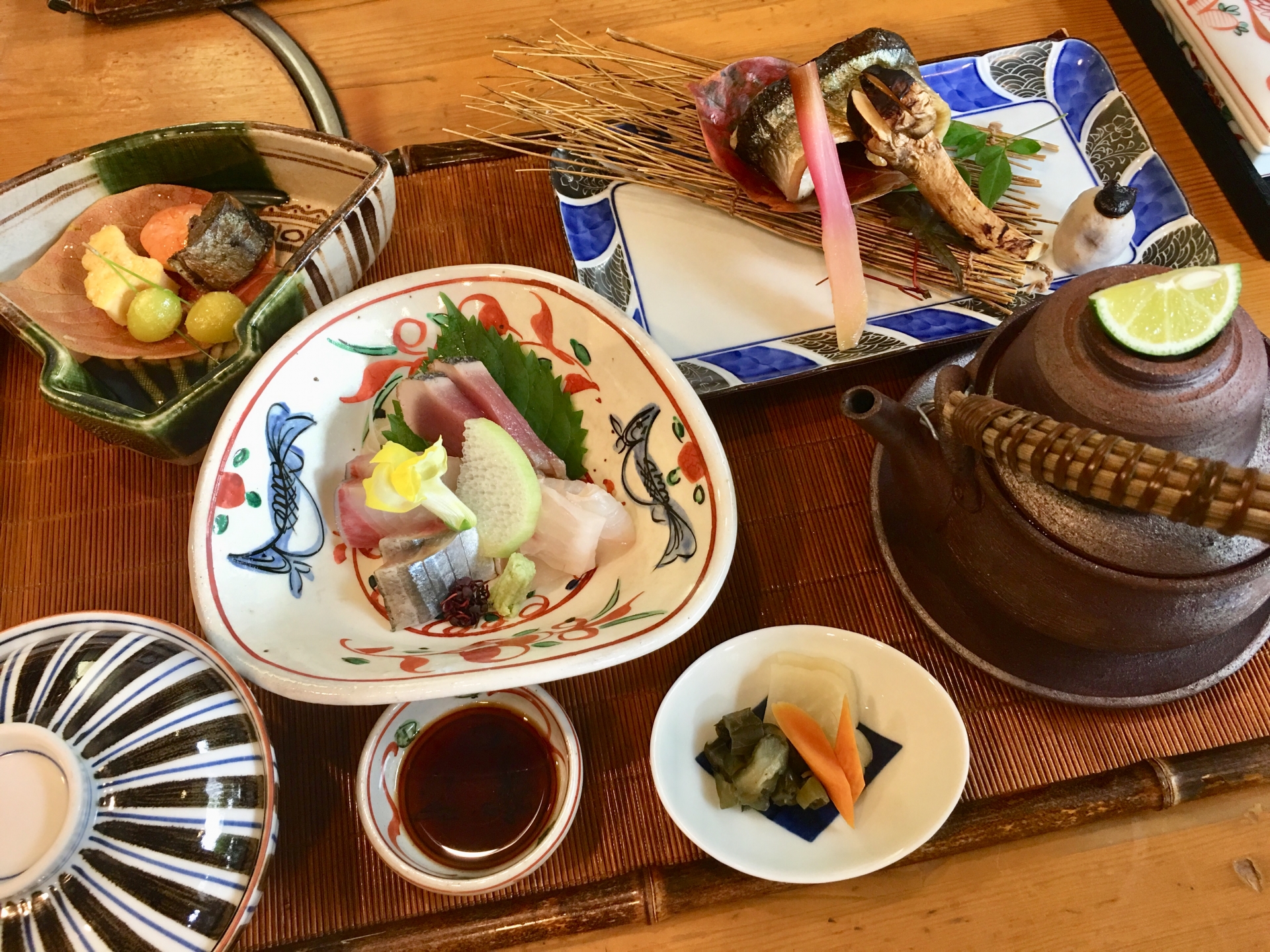
Stefanie Akkerman moved from the Netherlands to Japan in 2013 with her Japanese husband and son. She jumped into the niche of Dutch tour guiding in Tokyo and Kamakura in 2015 and occasionally writes articles about all the great sights and activities Japan has to offer. She loves (Japanese) food, and to work that all off she goes diving, snorkeling, cycling, or hiking.
This post may contain some affiliate links. When you click through and make a purchase we may receive some commission, at no extra cost to you.
Each country has its own entertainment and comedy traditions. Many people all over the world love watching funny home videos where kids or animals do silly things or of things going wrong in some unexpected way. Quick-witted stand-up comedy shows are also a popular form of entertainment in many parts of the world. When thinking about Japanese-style entertainment, TV shows like ‘Silent Library’ or silly Japanese variety shows centered around slapstick humor might come to mind. While this type of Japanese comedy can be hilarious at times, you might be in the mood for something more witty and refined. In that case, rakugo, a traditional way of Japanese storytelling, might be just what you are looking for. But what is rakugo exactly, and which rakugo stories are especially popular in Japan?
What is Rakugo? A Short Summary
The word rakugo (落語) literally means ‘fallen words’ and is a type of verbal entertainment in Japan. There is never more than one performer on stage, but he or she takes on the role of all the characters in the story by themselves. The story is always based on dialogue, and the rakugoka (rakugo performer) indicates the change between different characters by a change in pitch, tone and/or a slight turn of the head. The rakugoka sits in a kneeling seiza position on a small platform stage, and their only props are a fan and a small cloth. Rakugo stories are usually rather long, humorous stories which can sometimes also be sentimental. The true art of rakugo is to not simply tell the story and deliver the punchline, but to increase the comedic value by acting out the story with just the right tone and precise body gestures. While it may sound simple, the skill level of a rakugoka can really make or break a performance!
History of Rakugo
In the Heian period, people already liked sharing humorous stories. At the time, Buddhist monks liked quoting specific story collections in order to deliver the teachings of Buddha in an interesting way that would capture the attention of the audience. In the Sengoku period, a tumultuous time in Japan when feudal lords called daimyō fought each other for dominance, Buddhist monks were employed by the powerful daimyō to teach them about literature and how to be good conversational partners. A monk called Anrakuan Sakuden was particularly good at this and wrote a collection of 1000 stories, some of which came to be the stories laying the foundation for rakugo.
However, it wasn’t until the Edo period that this form of entertainment became a pastime for commoners as well. Rakugo became a type of general humorous storytelling that many kinds of entertainers took part in. Gradually, rakugo turned into a specific genre and became a realm for dedicated rakugo performers. The oldest rakugo book is called Seisuisho, which means ‘laughter to banish sleep’, and was published in 1623. Rakugo was very popular at first, but after a while its popularity declined.
In the late 18th century, a man named Utei Enba started a rakugo revival in Edo (now Tokyo) and many performing groups emerged. This was also the time when rakugo stories were written down, making sure later generations could enjoy them too. Rakugo stories are usually about things that can happen in daily life in different environments such as the average worker’s daily issues or the worries of kabuki actors. Some also poke fun at Japan’s different dialects. During this revival era, performances were held in the large cities of Edo, Osaka, and Kyoto. The Edo and Osaka traditions have survived, while the Kyoto style eventually died out.
Where Can I Experience Rakugo?
Nowadays, there are still people who are first and foremost known as rakugoka although many of them also do other work in the entertainment industry such as presenting on TV or doing voice-overs. Modern rakugo material is usually inspired by good-hearted daily life drama while still incorporating characters that have been used since the Edo period, but there are also rakugoka who specialize in simply reproducing classic rakugo sketches. In the latter case, the delivery of the material has to be excellent in order to be considered good since the material is not unique.
Many Japanese kids visit a rakugo performance with their school, so the art is being kept alive for the younger generations as well. Traditional theaters called yose have performances almost daily, so if your Japanese is good enough or you simply want to experience the atmosphere at a show, you can buy tickets for around 3000 yen per person. In Tokyo there is the Suzumoto Engeijo in Ueno, the Engei Hall in Asakusa and the Engeijo in Ikebukuro, and in Osaka you can visit the Tenma Tenjin Hanjotei.
You can also watch rakugo on TV in a variety show called Shoten that’s on every Sunday evening. If you want to see a rakugo performance in English, British bilingual Diane Kichijitsu’s videos can be found on YouTube.
And if you are interested in learning how to perform a short sketch of rakugo yourself, check out our exclusive online rakugo experience!
Rakugo Story Examples
Now, let’s have a look at 3 examples of rakugo stories!
The first one is a very short one from the 17th century:
“A man faints in a bathing tub. In the great confusion that follows, a doctor arrives and checks the man’s pulse while calmly giving these instructions: “Pull the plug and let the water out.” Once the water has disappeared and the tub is completely empty, the doctor says: “Good. Now put a lid on it and carry the guy to the cemetery.””
Here is one of the most famous rakugo stories in Japan:
“A couple could not think of a suitable name for their newborn baby boy, so the father went to the temple and asked the chief priest to come up with an auspicious name. The priest suggested several names, beginning with Jugemu. The father could not decide which name he preferred and therefore gave the baby all the names. One day, Jugemu falls into a lake and his parents barely arrive in time to save him because everyone has trouble reciting his name.
Jugemu’s full name is as follows:
Jugemu-jugemu
Gokōnosurikire
Kaijarisuigyo-no Suigyōmatsu
Unraimatsu Fūraimatsu
Kūnerutokoroni-sumutokoro
Yaburakōjino-burakōji
Paipopaipo-paiponoshūringan
Shūringanno-gūrindai
Gūrindaino-ponpokopīno-ponpokonāno
Chōkyūmeino-chōsuke”
And this is an example of a modern rakugo story:
“It was great being able to drink with you today. Thank you!
Me too. Yep. I’m so happy we were able to drink together today!
So glad we could meet up at this store.
Me too. I’m so happy.
Thank you! U-huh!
Let’s keep in touch from now on. Okay?
It’ll be a pleasure to keep in touch! Yes! Where is it that you live?
My home is, um – by the way, drop by anytime, okay? – you step out, turn right and go down the hill, take a right at the first corner and then it’s the second house.
Alright. Go out the store and down the hill, right at the first corner huh, and the second house, right? Wait, isn’t that my house?
No, what are you saying, go out the house and down the hill, second house after you turn right around the first corner. That’s my house!
No way, that’s gotta be my house.
Nope, that is my house.
No, that’s my house, man.
What are you saying?!
Hey boss, hey boss! Those two are going at it, shouldn’t we stop them or something?
Leave them alone, those two are family.”
Japan Wonder Travel Tours
Japan Wonder Travel is a travel agency that offers guided tours throughout Japan.
From private walking tours to delicious Food and Drink tours, we can help you organize the best tours just for you! If you want to explore Japan and learn more about the history and backstories of each area you are visiting, our knowledgeable and friendly English speaking guides will happily take you to the best spots!
In addition, we can provide you with any assistance you may need for your upcoming trip to Japan, so please feel free to contact us if yu have any questions or need some help!
▶Tokyo Tsukiji Fish Market Food and Drink Tour
Explore the most lively and popular fish market in Tokyo and try some of the local’s favorite street foods and sake with one of our friendly and knowledgeable English speaking guides!

▶Tokyo 1–Day Highlights Private Walking Tour (8 Hours)
There’s no better way to explore an area than taking a tour with a knowledgeable local guide. You will have the chance to learn about the history and interesting background stories of Tokyo, as well as discover some hidden gems which can be hard to do without a guide.

▶Mt. Fuji Day Trip Bus Tour from Tokyo
Experience the breathtaking views of Mt. Fuji by visiting the highlights of the area on our guided sightseeing bus tour! Departing from Shinjuku in central Tokyo, you can travel comfortably to all of the best spots in the area by bus.

Follow us on Instagram, Facebook, Twitter, and TikTok for more travel inspiration. Or tag us to get featured!
Happy traveling!




